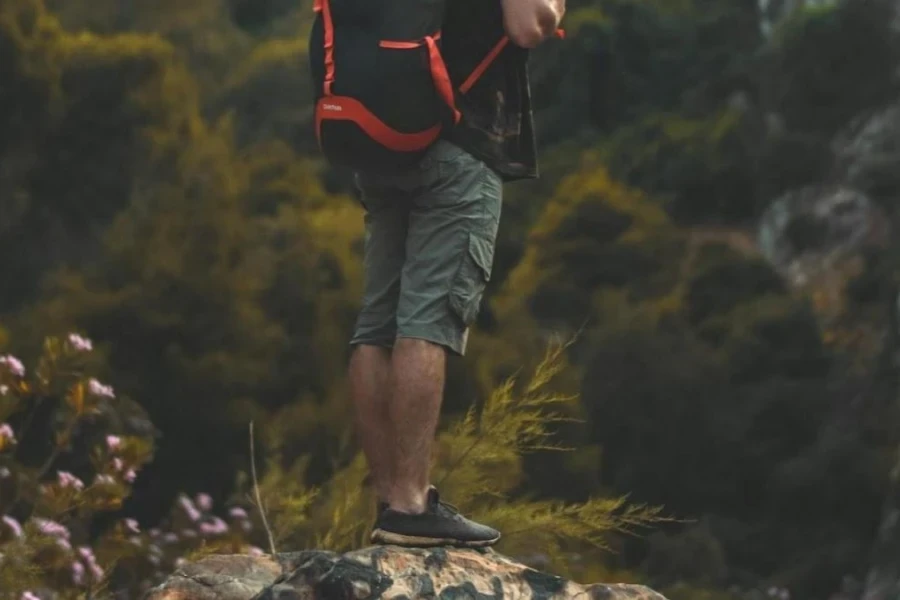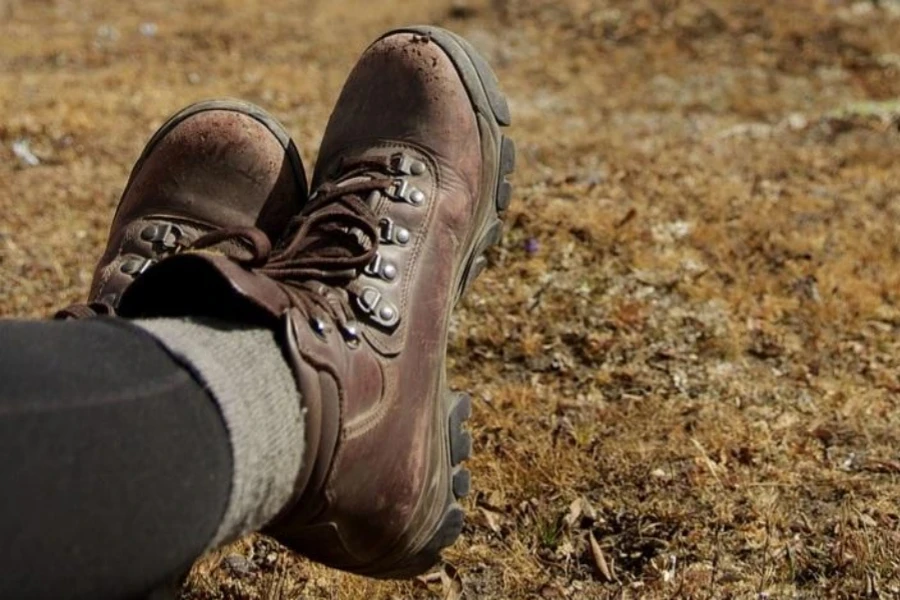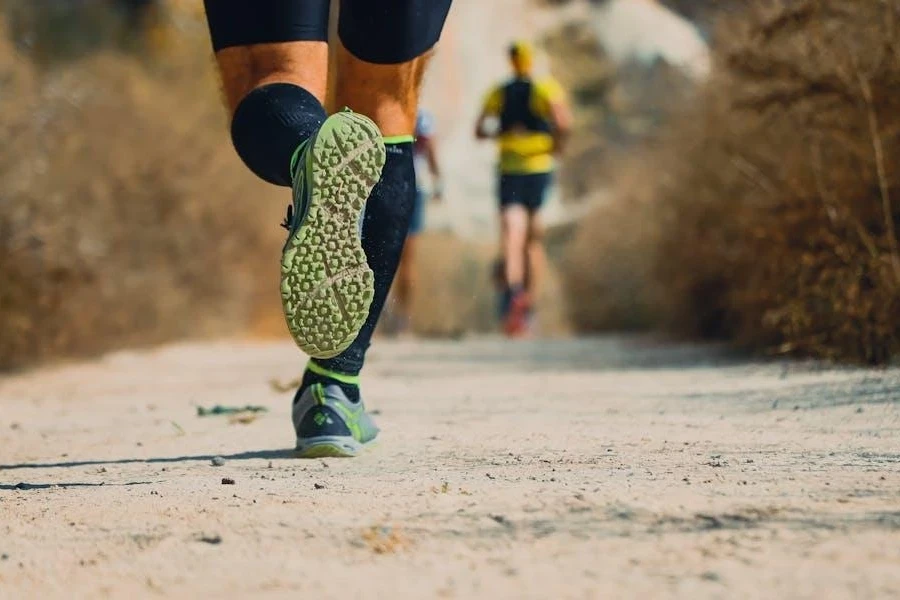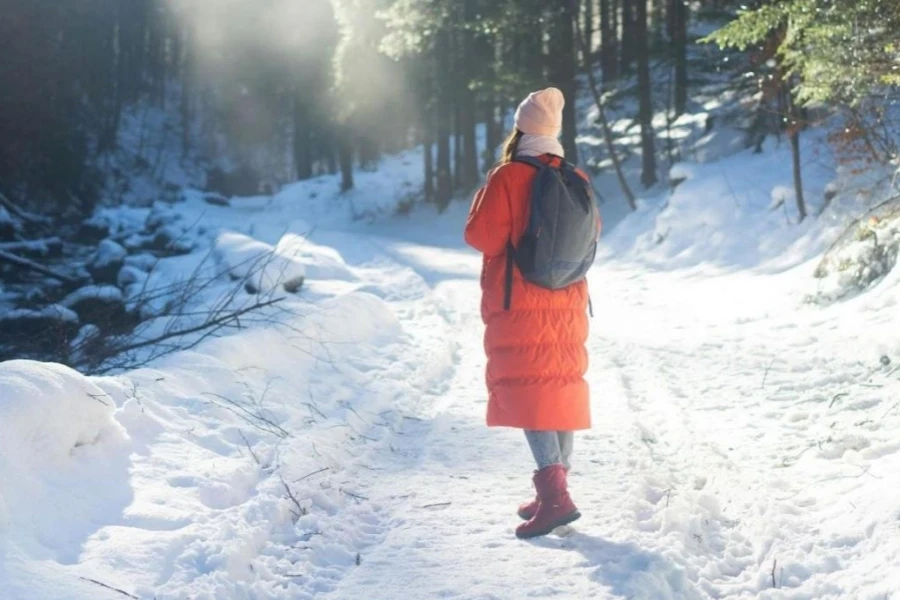Hiking is an incredible way to experience the great outdoors. But that enjoyment is arguably dependent on one piece of kit more than any other: a comfortable pair of hiking boots. Since our feet do most of the work on these long forays into the wilderness, it pays to invest in a pair that can withstand rugged terrain.
For this reason, choosing which hiking boots to sell to different types of consumers can be tricky. That’s why we’ll explore five of the most comfortable hiking boots and how businesses can best stock them in 2024.
Table of Contents
An overview of the hiking boot market
5 of the most comfortable hiking boots
3 things to consider when choosing hiking boots
Summary
An overview of the hiking boot market
The global hiking boot market is bigger than ever, estimated to be worth USD 12.830 billion in 2022 and forecast to reach USD 23.582 billion by 2031 at a 7% CAGR. Experts anticipate Europe will be the most profitable region during the forecast period.
As more people look to the great outdoors for adventures, the demand for hiking boots continues to skyrocket.
5 of the most comfortable hiking boots in 2024
1. Lightweight hiking boots

Consumers who prefer casual hikes are unlikely to look for bulky boots that will weigh them down. Instead, they’ll prefer lighter footwear that lets their feet breathe and allow for easier movement. That’s the magic of lightweight hiking boots.
These lighter-weight shoes are perfect for day hikes or fastpacking, where speed and agility are more important than stability. Unlike their chunkier cousins, lightweight hiking boots are designed with flexibility in mind – imagine athletic shoes but for rough terrain.
Lightweight hiking boots let consumers easily navigate uneven ground, with the low-ankle cut giving more freedom of movement. According to Google data, lightweight hiking boots averaged 9,900 searches in 2023. But by the first half year of 2024, searches had increased by an impressive 22% to 12,100 searches.
2. Midweight hiking boots

Think of midweight hiking boots as the Goldilocks porridge of the boot world – just right for various adventures. They perfectly balance lightweight boots’ nimble flexibility and more heavyweight options’ sturdy support. Hence, midweight hiking boots are ideal for day hikes, multi-day backpacking trips, and even venturing off the beaten path on light hikes with rougher terrain.
Compared to lightweight boots, midweight boots provide more ankle protection, providing more confidence when navigating uneven ground or carrying slightly heavy backpacks. The best part is that these boots don’t sacrifice comfort for stability.
Midweight hiking boots are relatively comfortable, allowing hikers to conquer miles of trails without feeling weighed down by clunky footwear. However, they tend to appeal to a more niche audience, consistently receiving 1,900 monthly searches over the four months of April, May, June, and July 2024, according to Google data.
3. Backpacking (or heavyweight) boots

Backpacking boots are the ultimate companion for trekkers venturing deep into the wild. These workhorses are designed to handle the toughest trails and the heaviest loads.
Heavyweight boots rise above the ankles to give wearers maximum support. That way, backpackers can remain steady despite heavy loads. Their stiffer soles can also handle the pressure of heavy backpacks, preventing unnecessary fatigue and discomfort on long treks.
These boots are also popular, with up to 201,000 people searching for them in July 2024.
4. Trail running shoes

If heavyweight boots are the workhorses of hiking, then trail running shoes are the ninjas. They are all about speed, agility, and conquering trails with a lightweight feel.
Trail running shoes boast super-light designs, allowing consumers to move freely and react quickly on trails. Unlike smooth road running shoes, trail shoes have aggressive treads that are grippy enough to grip loose surfaces like dirt, rocks, and roots.
This aggressive tread gives trail runners superior traction and helps them maintain their footing no matter how rough the path may get. But there’s a trade-off to this lightweight and grippy design: Trail running shoes don’t have the same ankle support and protection as hiking boots. They are built for speed, not for carrying heavy backpacks or tackling super technical terrain.
Trail running shoes have become popular recently, with searches starting at 74,000 in January 2024 and growing to 135,000 by July – a 50% increase in seven months.
5. Winter hiking boots

The most avid hikers don’t stop at the sight of a little snow. But safe winter hiking requires proper footwear, and that’s where winter boots come in. These boots are the ultimate option for cold-weather trails.
In contrast to regular boots, winter hiking boots often include insulation, trapping warm air inside, and keeping feet toasty even on the coldest of days. Winter boots also have a waterproof membrane to prevent melted snow and slush from getting in.
Winter hiking boots also have aggressive treads with deep lugs. This provides them with enough traction to counter slippery surfaces like ice and snow, though can make them bulkier and stiffer compared to other varieties of boot.
Unsurprisingly, searches for winter hiking boots peak during the winter months, attracting 33,100 searches in December 2023 before dropping to 27,100 in January and February 2024.
3 things to consider when choosing hiking boots

1. Target terrain
Generally, there are three types of terrain: easy, uneven, and off-trail. Easy trails require enough flexibility to allow natural foot movements, making light hiking boots or trail running shoes the best option for maximum comfort and reduced fatigue.
For more technical terrain, consumers will need stiffer soles for more stability. Hence, businesses should stock midweight or backpacking boots for these buyers. Lastly, consumers going off-trail will need all the support they can get, making backpacking or heavyweight boots the best option.
2. Backpack weight
Pack weight is another significant factor that will determine a consumer’s perfect hiking boot. If they are adventuring with a light backpack, retailers can offer them light and flexible hiking shoes (if terrain allows). However, a heavier backpack should be paired with high-cut boots for extra support across different terrains.
3. Hike length and pace
Lastly, the consumer’s hiking length and pace will also influence the shoes they need. Short hikes often need flexibility over stability, while longer adventures need more stability and support. If consumers are likely to use their shoes frequently, offer them hiking boots with thicker outsoles.
Additionally, experience plays a role here. Novice hikers are more likely to need high-quality hiking boots with additional support (e.g., midweight or heavyweight options) for maximum confidence. Conversely, more experienced hikers have more choices.
Summary
Hiking boots are a necessary accessory for safe and fun outdoor trekking. However, the boots likely to offer the most comfort depends on various factors, like target terrain, hike length, and pack weight.
Hiking shoes’ popularity continues to grow. So, it is advisable that businesses stock lightweight boots, midweight boots, backpacking boots, trail running shoes, and winter hiking boots to cover the major options that consumers are looking for.
For more tips on products and accessories making waves in the world of sports, make sure to follow the Chovm.com Sports Section.





 বাংলা
বাংলা Nederlands
Nederlands English
English Français
Français Deutsch
Deutsch हिन्दी
हिन्दी Bahasa Indonesia
Bahasa Indonesia Italiano
Italiano 日本語
日本語 한국어
한국어 Bahasa Melayu
Bahasa Melayu മലയാളം
മലയാളം پښتو
پښتو فارسی
فارسی Polski
Polski Português
Português Русский
Русский Español
Español Kiswahili
Kiswahili ไทย
ไทย Türkçe
Türkçe اردو
اردو Tiếng Việt
Tiếng Việt isiXhosa
isiXhosa Zulu
Zulu